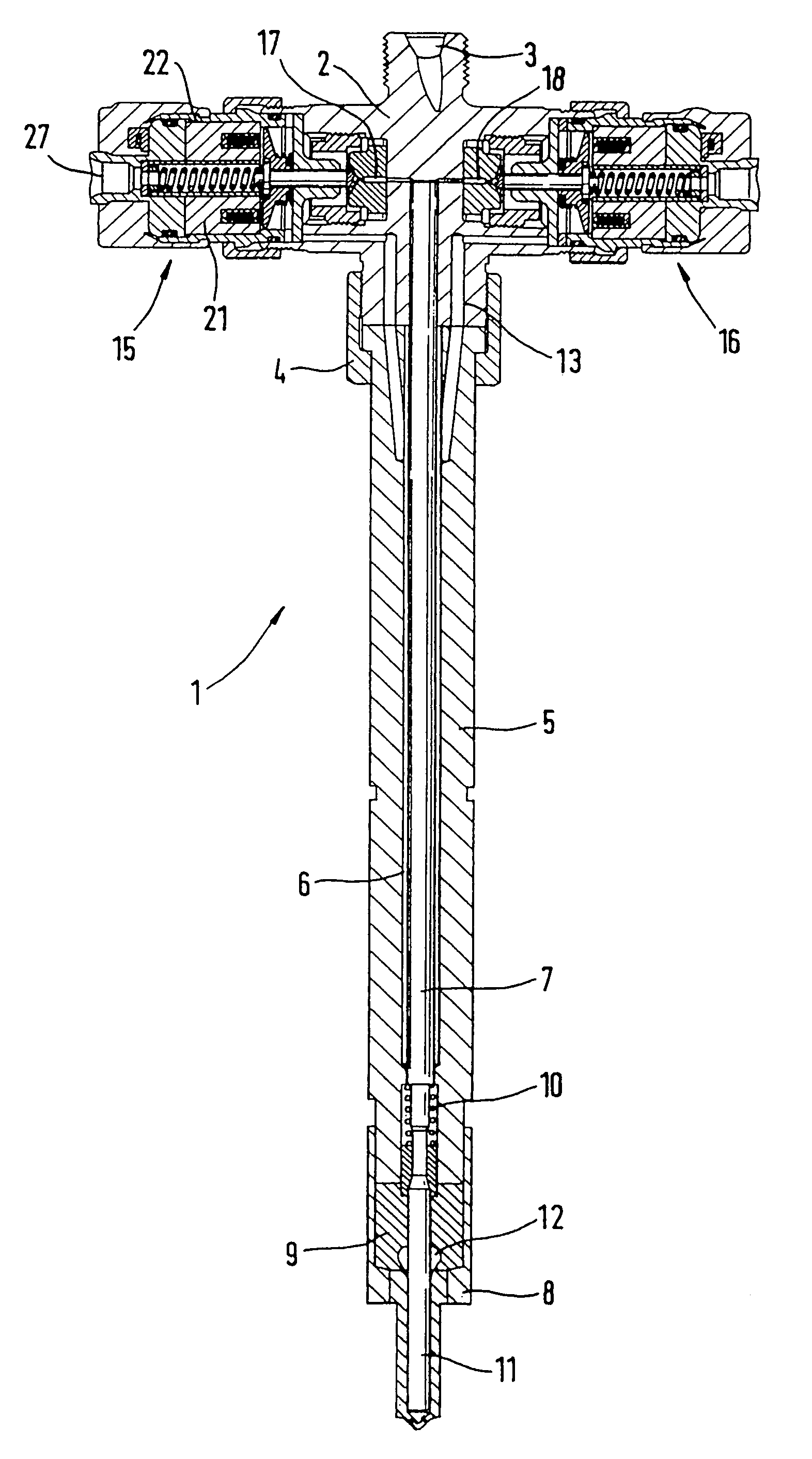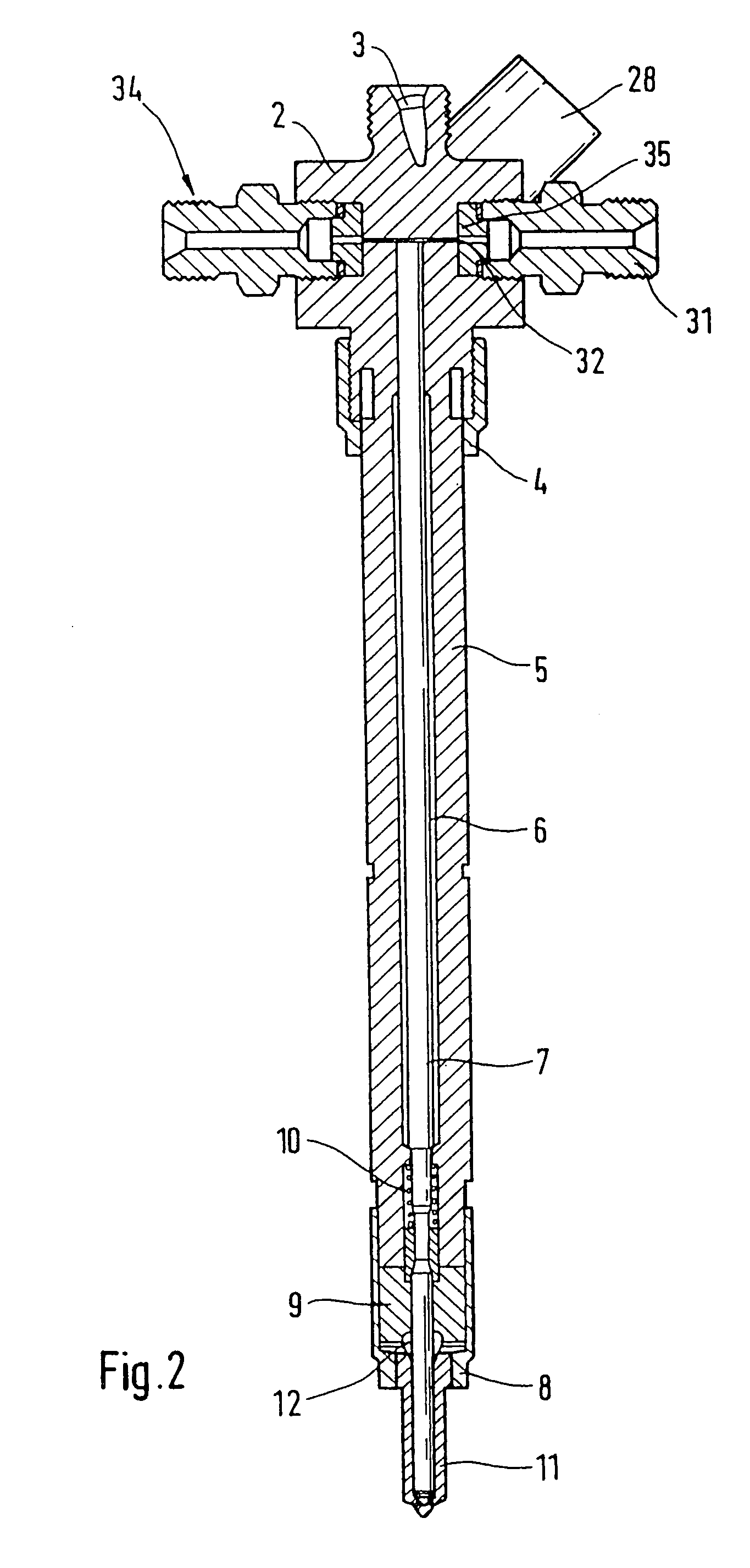Fuel injector with and without pressure ampification with a controllable needle speed and method for the controlling thereof
a fuel injector and needle speed technology, applied in the direction of fuel injection apparatus, combustion engine, charge feed system, etc., can solve the problems of reducing the effective brake mass, armature chatter, reducing the kinetic energy of the armature, etc., to achieve the effect of rapid relief of pressure, high speed of the nozzle needle, and more design freedom
- Summary
- Abstract
- Description
- Claims
- Application Information
AI Technical Summary
Benefits of technology
Problems solved by technology
Method used
Image
Examples
Embodiment Construction
[0031]FIG. 1 shows a fuel injector 1, which has a valve body 2 to which a holding body 5 is fastened by means of a clamping nut 4. The holding body 5 has a central bore 6 that contains a push rod 7 that extends in the valve body 2 and through the holding body 5. The lower end of the holding body 5, which is interchangeably fastened to the valve body 2 by means of the clamping nut 4, accommodates a nozzle retaining nut 8, which in turn contains a nozzle body 9. The nozzle retaining nut 8 serves to screw the lower end of the holding body 5 to the nozzle body 9. The transition region between the lower end of the holding body 5 and the upper region of the nozzle body 9 contains a closing spring 10, which encompasses the lower end of the push rod 7 and acts on a vertically moving injection valve element 11 contained in the nozzle body 9. The injection valve element 11 is preferably embodied as a nozzle needle and, in the region of a pressure shoulder, is encompassed by nozzle chamber 12....
PUM
 Login to View More
Login to View More Abstract
Description
Claims
Application Information
 Login to View More
Login to View More - R&D
- Intellectual Property
- Life Sciences
- Materials
- Tech Scout
- Unparalleled Data Quality
- Higher Quality Content
- 60% Fewer Hallucinations
Browse by: Latest US Patents, China's latest patents, Technical Efficacy Thesaurus, Application Domain, Technology Topic, Popular Technical Reports.
© 2025 PatSnap. All rights reserved.Legal|Privacy policy|Modern Slavery Act Transparency Statement|Sitemap|About US| Contact US: help@patsnap.com



